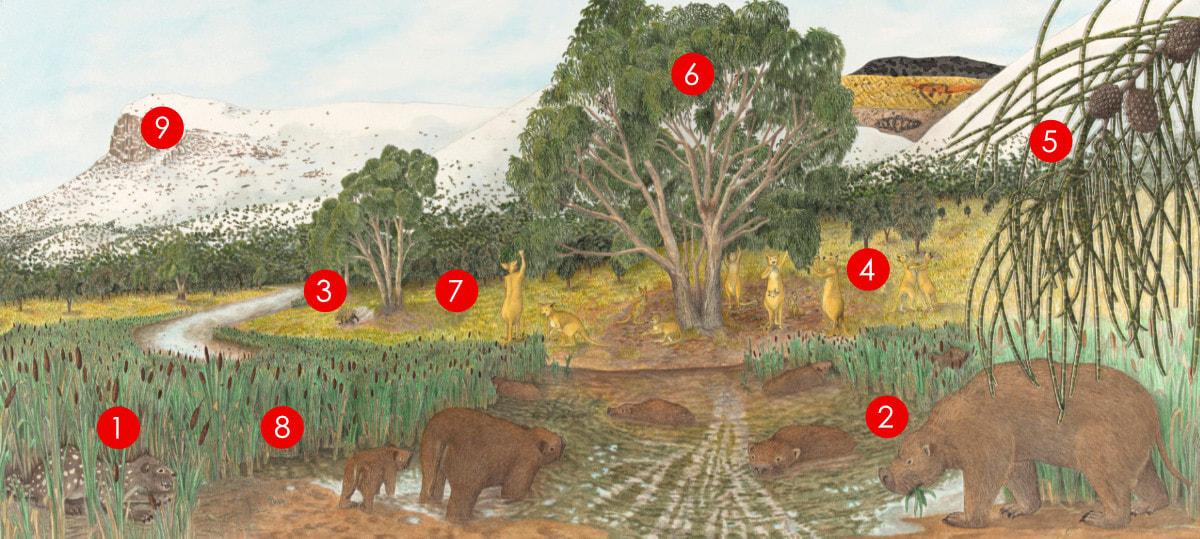The Pleistocene Megafauna
The Pleistocene Period spans the time between 2.5 million and around 12,000 years ago. It is followed by the Holocene Period which extends into the present day. By the start of the Pleistocene, Australia and Tasmania had migrated northwards to a point approaching their modern position.
The Pleistocene was characterised by a strong cycle of climate variation. Periods of glaciation, cold, dry climate and low sea levels often referred to as ice ages were separated by interglacials, spans of time which were warmer, wetter and had higher sea levels. These variations held particular significance for Tasmania as the changing sea level repeatedly opened and closed a land bridge across Bass Strait that connected it to mainland Australia. Opening of the land bridge during the late Pleistocene enabled the migration of the first humans onto the island.
In Australia and Tasmania many of the plants and animals with which we are familiar today were around during the Pleistocene, including present-day monotremes and marsupials. Less familiar to us are the large-bodied animals, collectively referred to as the marsupial megafauna, who also roamed the continent during this period. Now extinct, remains of these animals are found in cave deposits and sites across Australia, including several locations in northwest and central Tasmania.
The Pleistocene was characterised by a strong cycle of climate variation. Periods of glaciation, cold, dry climate and low sea levels often referred to as ice ages were separated by interglacials, spans of time which were warmer, wetter and had higher sea levels. These variations held particular significance for Tasmania as the changing sea level repeatedly opened and closed a land bridge across Bass Strait that connected it to mainland Australia. Opening of the land bridge during the late Pleistocene enabled the migration of the first humans onto the island.
In Australia and Tasmania many of the plants and animals with which we are familiar today were around during the Pleistocene, including present-day monotremes and marsupials. Less familiar to us are the large-bodied animals, collectively referred to as the marsupial megafauna, who also roamed the continent during this period. Now extinct, remains of these animals are found in cave deposits and sites across Australia, including several locations in northwest and central Tasmania.



